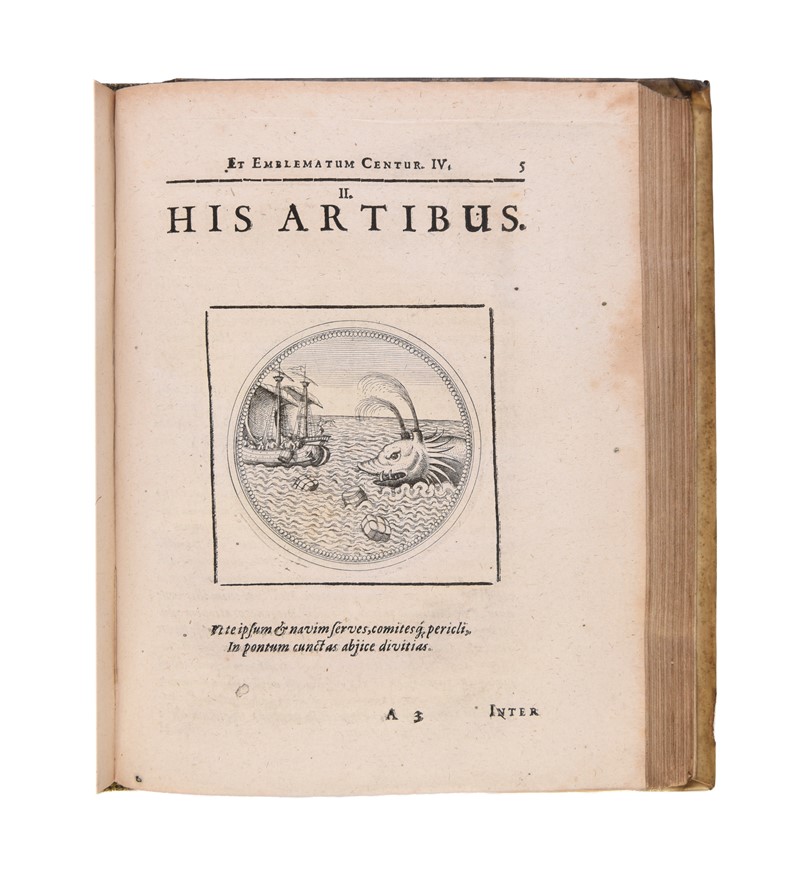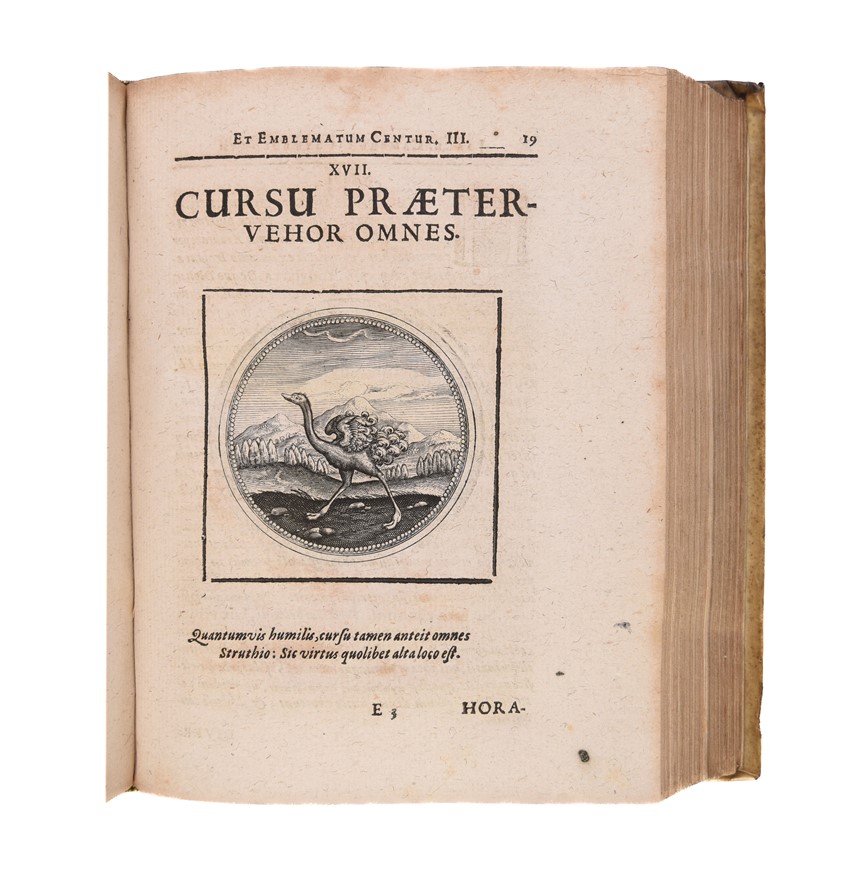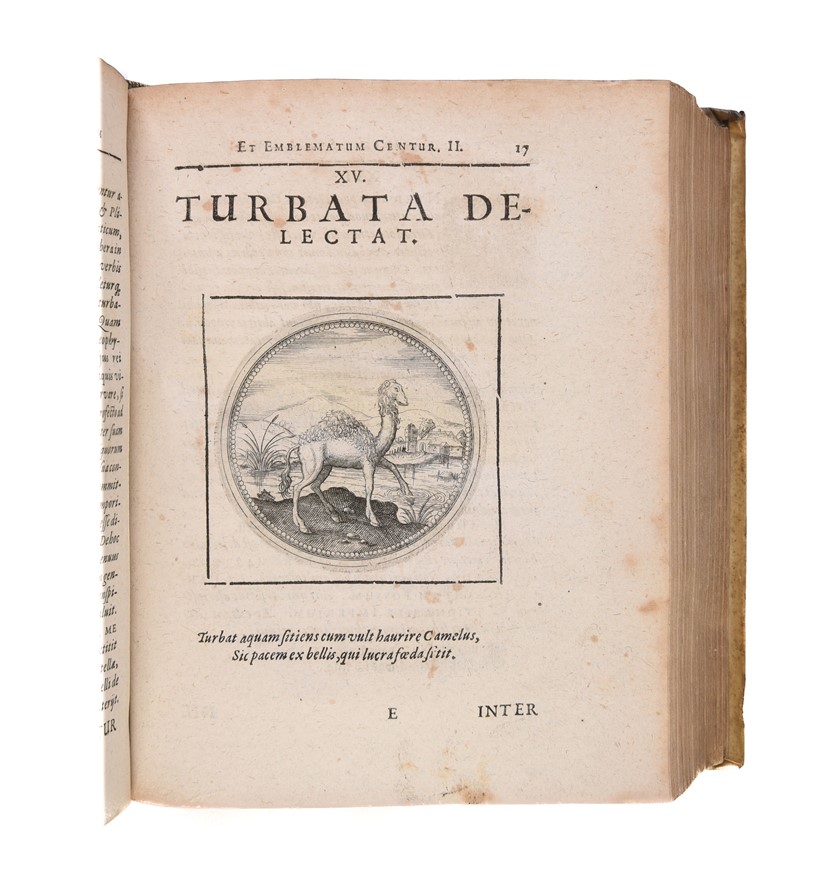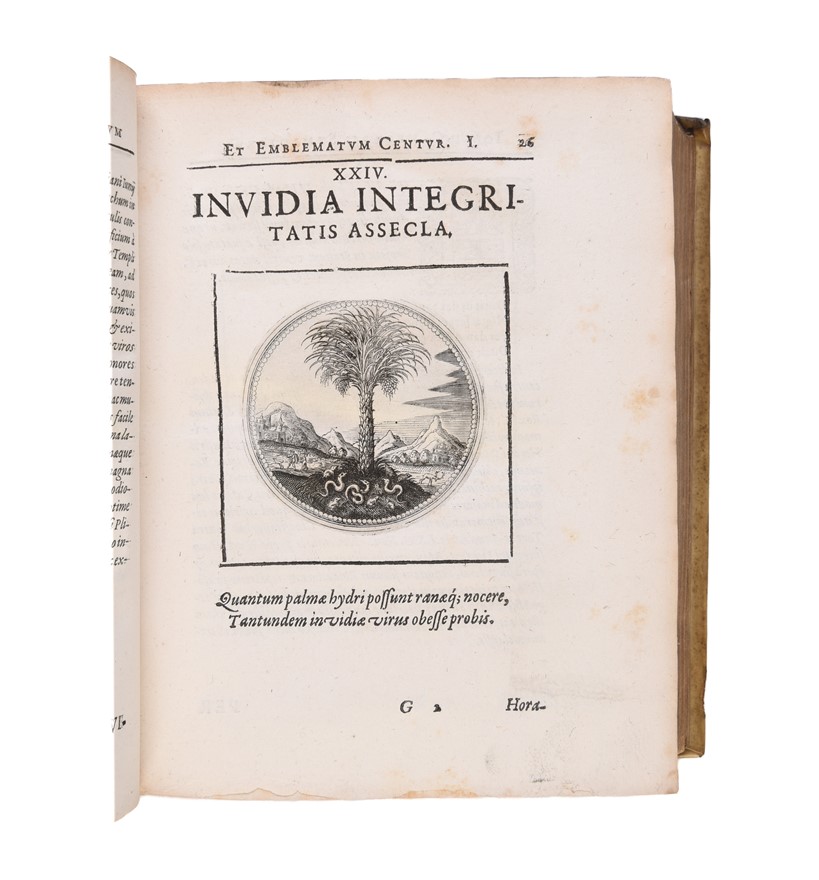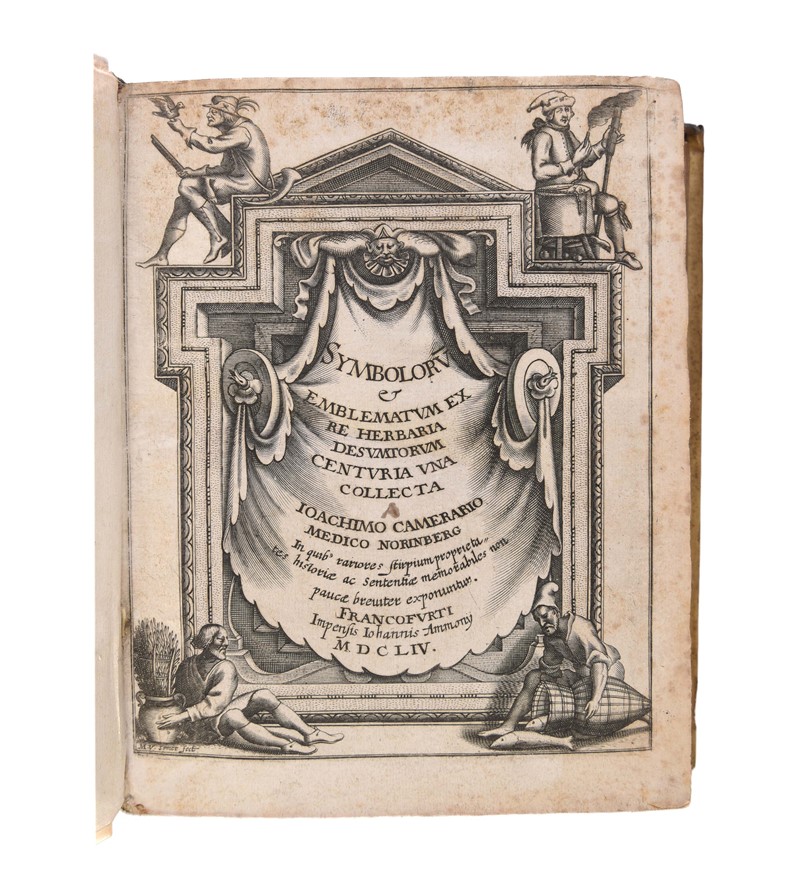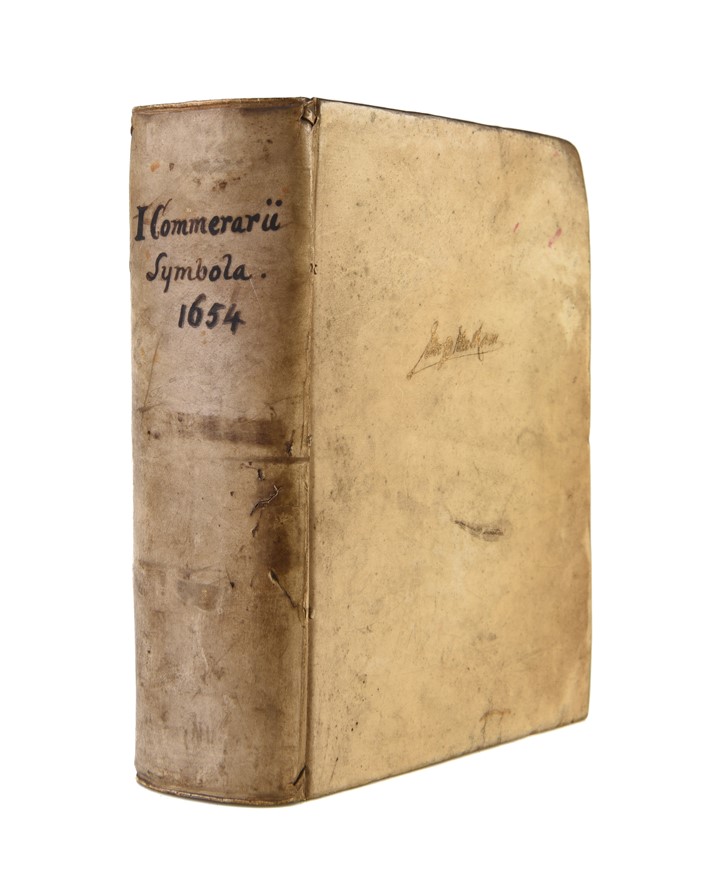Symbolorum et emblematum ex re herbaria desmumtorum centuria una collecta.Frankfurt, Johann Ammonius, 1654
CAMERARIUS Joachim (1654)
£2500.00
Please contact us in advance if you would like to view this book at our Curzon Street shop.
THE BOTANIST GEORGE BENTHAM'S COPY
Engraved title-page and three section titles, 400 circular engraved illustrations of plants and trees, animals, birds and insects, and fish.
4to (205 x 155mm). 4 parts in one vol. Contemporary vellum over paste board, later ink title on spine, and late 19/20th century gilt ownership signature stamp on front cover.
The 19th century botanist George Bentham's copy of a collected edition of the first work to treat natural history in emblematic form.
The 400 emblems are derived from nature and represent plants and flowers, quadrapeds, birds and insects, fish, sea creatures and serpents. Each emblem is accompanied by explanatory texts influenced by the hieroglyphic studies of the Renaissance coupled with Camerarius' understanding of nature based on Pliny and other classical authors. The physician Joachim Camerarius (1534-1598) cultivated a large botanical garden in Nuremberg and many of the specimens which are represented here are taken from plants that he had grown. The emblems have been attributed to Hans Sibmacher or Hans Schroder.
The four parts were first published separately from 1590-1604 and the first collected edition had a new general title-page dated 1605 and dedication. This edition is dedicated to Karl Ludwig, Elector Palatine of the Rhine and has been reset, the plates touched up and now within a rectangle and sometimes a typographical border.
A little spotted and browned in places due to paper quality.
Provenance: George Bentham (1800-84), with his gilt signature stamp on the front cover and the pencil signature inside the front cover. Bentham, nephew of Jeremy Bentham, was an English botanist and has been described as the "premier systematic botanist of the 19th century". He was author of a number of botanical works and is best known for his collaboration with Joseph Dalton Hooker which produced the Genera Plantarum (1862-83), a taxonomic classification of plants. He was elected president of the Linnaean Society in 1861 and a fellow of the Royal Society in the following year. (See ODNB).
Praz p. 295. Landwehr German 167. Nissen ZBI 793.
Stock Code: 250148
